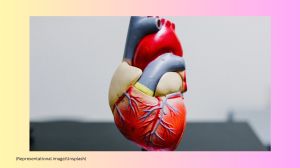- India
- International
Plant cellulose may soon replace plastics as a biodegradable alternative in 3D printing
The intermolecular bonding also makes high-concentration cellulose solutions too viscous to easily extrude, researchers said.
 Researchers chose to work with cellulose acetate – a material that is easily made from cellulose and is already widely produced and readily available. (Image for representation, source: Press photo)
Researchers chose to work with cellulose acetate – a material that is easily made from cellulose and is already widely produced and readily available. (Image for representation, source: Press photo)
“Cellulose and its derivatives are used in pharmaceuticals, medical devices as food additives, building materials, clothing, all sorts of different areas.
And a lot of these kinds of products would benefit from the kind of customisation that additive manufacturing – 3D printing enables,” Pattinson added.
Watch all our videos from Express Technology
When heated, cellulose thermally decomposes before it becomes flowable. The intermolecular bonding also makes high-concentration cellulose solutions too viscous to easily extrude, researchers said.
To avoid this problem, researchers chose to work with cellulose acetate – a material that is easily made from cellulose and is already widely produced and readily available.
Using cellulose acetate the number of hydrogen bonds in this material was reduced by the acetate groups. Cellulose acetate can be dissolved in acetone and extruded through a nozzle. As the acetone quickly evaporates, the cellulose acetate solidifies in place. A subsequent optional treatment replaces the acetate groups and increases the strength of the printed parts.

“After we 3D print, we restore the hydrogen bonding network through a sodium hydroxide treatment. “We find that the strength and toughness of the parts we get are greater than many commonly used materials,” for 3D printing, including acrylonitrile butadiene styrene (ABS) and polylactic acid (PLA), said Pattinson.
The research was published in the journal Advanced Materials Technologies.
More Tech
Apr 25: Latest News
- 01
- 02
- 03
- 04
- 05
































